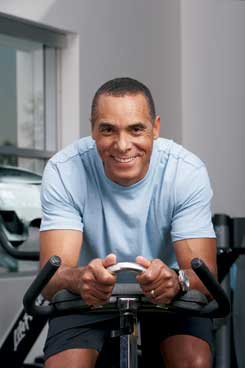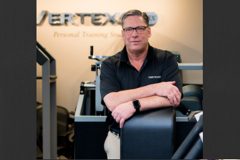Staying Fit with Lung Conditions
Years ago, people with lung conditions were advised to take it easy, and sit out of strenuous activities. Thanks to medical research, those days are over.
It’s established that regular exercise is beneficial for people with lung disease. Staying active and fit can help you breathe easier and do more with less effort, improving your quality of life and reducing your risk for other health problems.
Breathing easily is something that most people take for granted. But when you’re living with a lung condition, such as asthma, chronic obstructive pulmonary disease (COPD), or restrictive lung disease, breathing is something you’re always aware of, and shortness of breath may be a fact of life. But exercise can help.
Boost Fitness, Breathe Easier
Regular exercise won’t heal the underlying lung disease or improve lung function, but it reduces shortness of breath and improves your ability to perform everyday activities. At the same time, regular exercise reduces your risk of other serious conditions, such as diabetes, osteoporosis, and heart disease. People with lung conditions are often sedentary due to shortness of breath with activity. But a sedentary lifestyle results in loss of cardiovascular fitness and muscular strength, which in turn worsens shortness of breath—it’s a vicious cycle. Breaking that cycle with fitness training helps the body work more efficiently and helps you make better use of the oxygen taken in with each breath. This, in turn, leads to less shortness of breath. Regular exercise also helps reduce anxiety and depression, conditions that often accompany lung disease.
Pulmonary Rehabilitation
Outpatient pulmonary rehabilitation is a terrific program for people with lung conditions. Under the supervision of nurses and exercise physiologists, you’ll perform cardiovascular, strength, and flexibility exercise as well as respiratory muscle training. The staff closely monitors symptoms, changes in medication and responses to exercise to make sure that your progress is steady and that all prescribed exercise is safe and effective for you. They also stay in touch with your health care providers to ensure the best care possible. Educational classes are a key part of pulmonary rehabilitation, where patients and their family members learn about medications, breathing techniques, managing symptoms, oxygen therapy, energy conservation and work simplification. Social support is another element of the program. You get to know others who are dealing with similar challenges. If you’re interested in pulmonary rehabilitation, ask your health care provider for a referral. These programs are usually offered in a hospital or clinical setting and are often covered by medical insurance.
Get Up and Get Active
If your lung condition is less severe and you just want to become more active, talk with your health care provider about what exercises are best for you and how to coordinate medication with your exercise schedule.
Continue reading Click HERE
Request a complimentary first session at Vertex Fitness, Voted the BEST Personal Training Studio on the Main Line
Click HERE and we will schedule a session to try it yourself









Leave a Comment